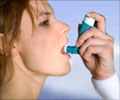Medical devices are prescibed to help relieve symptoms and sometimes, to treat potentially fatal allergic reactions

"The study suggests that either people weren't properly trained how to use the devices, didn't completely understand the instructions even after training, or forgot the instructions over time," said allergist Rana Bonds, MD, ACAAI Fellow and lead author of the study. "Younger patients and those with prior medical education were more likely to use the auto-injector correctly."
The most common error for epinephrine users was not only holding the unit in place for at least 10 seconds after triggering but also included failure to place the needle end of the device on the thigh and failure to push down forcefully enough to activate the injection. The most common mistake for those using inhalers was not exhaling prior to delivering the puff of medication in order to empty out the lungs as much as possible, so a very deep breath can be taken when the medicine is inhaled. The common mistake was not shaking the inhaler before administering the second medication puff.
"Clearly there is room for improvement on how we teach patients to use these devices," said allergist Aasia Ghazi, MD, ACAAI member, and study author. "We need to consider repeated verbal instructions as well as more effective visual presentations. Improper use of the devices means people's lives are at stake, especially with epinephrine, and there is reduced value in the medicine they're trying to use. Most patients made multiple mistakes and steps were missed. They wouldn't benefit from these potentially life-saving tools if they were in trouble."
Source-Medindia














